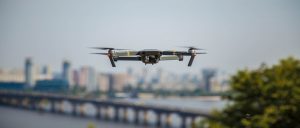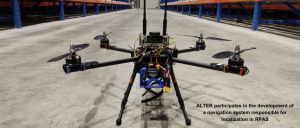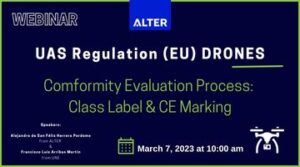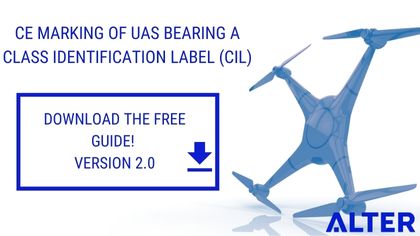Article 1 – 3: Subject matter, scope, and definitions
Regulation (EU) 2019/945: General provisions
Commission Delegated Regulation (EU) 2019/945 of 12 March 2019 on unmanned aircraft systems and third-country operators of unmanned aircraft systems.
CHAPTER I
General provisions
Article 1
Subject matter
- This Regulation lays down the requirements for the design and manufacture of unmanned aircraft systems (‘UAS’) intended to be operated under the rules and conditions defined in Implementing Regulation (EU) 2019/947 and of remote identification add-ons. It also describes the type of UAS whose design, production, and maintenance shall be subject to certification.
- It also establishes rules on making UAS intended for use in the ‘open’ category and remote identification add-ons available on the market and their free movement in the Union.
- This Regulation also lays down rules for third-country UAS operators when they conduct a UAS operation under Implementing Regulation (EU) 2019/947 within the single European sky airspace.
Article 2
Scope
- Chapter II of this Regulation applies to the following products:
(a) | UAS intended to be operated under the rules and conditions applicable to the ‘open’ category of UAS operations according to Implementing Regulation (EU) 2019/947, except privately built UAS, and bearing a class identification label as set out in Parts 1 to 5 of the Annex to this Regulation indicating to which of the five UAS classes referred to in Implementing Regulation (EU) 2019/947 it belongs to; |
(b) | remote identification add-ons as set out in Part 6 of the Annex to this Regulation. |
- Chapter III of this Regulation applies to UAS operated under the rules and conditions applicable to the ‘certified’ and ‘specific’ categories of UAS operations under Implementing Regulation (EU) 2019/947.
- Chapter IV of this Regulation applies to UAS operators that have their principal place of business, are established, or reside in a third country if the UAS are operated in the Union.
- This Regulation does not apply to UAS intended to be exclusively operated indoors.
Article 3
Definitions
For this Regulation, the following definitions apply:
(1) | ‘unmanned aircraft’ (‘UA’) means any aircraft operating or designed to operate autonomously or to be piloted remotely without a pilot on board; |
(2) | ‘equipment to control unmanned aircraft remotely’ means any instrument, equipment, mechanism, apparatus, appurtenance, software, or accessory that is necessary for the safe operation of a UA other than apart and which is not carried on board that UA; |
(3) | ‘unmanned aircraft system’ (‘UAS’) means an uncrewed aircraft and the equipment to control it remotely; |
(4) | ‘unmanned aircraft system operator’ (‘UAS operator’) means any legal or natural person operating or intending to operate one or more UAS; |
(5) | ‘open’ category’ means a category of UAS operations that are defined in Article 4 of Implementing Regulation (EU) 2019/947; |
(6) | ‘specific’ category means a category of UAS operations that are defined in Article 5 of Implementing Regulation (EU) 2019/947; |
(7) | ‘certified’ category means a category of UAS operation that is defined in Article 6 of Implementing Regulation (EU) 2019/947; |
(8) | ‘Union harmonization legislation’ means any Union legislation harmonizing the conditions for placing products on the market; |
(9) | ‘accreditation’ means accreditation as defined in paragraph 10 of Article 2 of Regulation (EC) No 765/2008; |
(10) | ‘conformity assessment’ means the process demonstrating whether the specified requirements relating to a product have been fulfilled; |
(11) | ‘conformity assessment body’ means a body that performs conformity assessment activities, including calibration, testing, certification, and inspection; |
(12) | ‘CE marking’ means a marking by which the manufacturer indicates that the product conforms with the applicable requirements set out in Union harmonization legislation providing for its affixing; |
(13) | ‘manufacturer’ means any natural or legal person who manufactures a product or has a product designed or manufactured and markets that product under their name or trademark; |
(14) | ‘authorized representative’ means any natural or legal person established within the Union who has received a written mandate from a manufacturer to act on his behalf about specified tasks; |
(15) | ‘importer’ means any natural or legal person established within the Union who places a product from a third country on the Union market; |
(16) | ‘distributor’ means any natural or legal person in the supply chain, other than the manufacturer or the importer, who makes a product available on the market; |
(17) | ‘economic operators’ means the manufacturer, the authorized representative of the manufacturer, the importer, and the distributor of the UAS; |
(18) | ‘making available on the market’ means any supply of a product for distribution, consumption, or use in the Union market in the course of commercial activity, whether in exchange for payment or free of charge; |
(19) | ‘placing on the market’ means the first making available of a product on the Union market; |
(20) | ‘harmonized standard’ means a harmonized standard as defined in point (c) of Article 2(1) of Regulation (EU) No 1025/2012; |
(21) | ‘technical specification’ means a document that establishes technical requirements to be fulfilled by a product, process, or service; |
(22) | ‘privately built UAS’ means a UAS assembled or manufactured for the builder’s use, not including UAS gathered from a set of parts placed on the market by the manufacturer as a single ready-to-assemble kit; |
(23) | ‘market surveillance authority’ means an authority of a Member State responsible for carrying out market surveillance on its territory; |
(24) | ‘recall’ means any measure aimed at achieving the return of a product that has already been made available to the end-user; |
(25) | ‘withdrawal’ means any measure aimed at preventing a product in the supply chain from being made available on the market; |
(26) | ‘single European sky airspace’ means airspace above the territory to which the Treaties apply, as well as any other airspace where Member States use Regulation (EC) No 551/2004 of the European Parliament and the Council (13) following paragraph 3 of Article 1 of that Regulation; |
(27) | ‘remote pilot’ means a natural person responsible for safely conducting the flight of a UA by operating its flight controls, either manually or, when the UA flies automatically, by monitoring its course and remaining able to intervene and change its course at any time; |
(28) | ‘maximum take-off mass’ (‘MTOM’) means the maximum UA mass, including payload and fuel, as defined by the manufacturer or the builder, at which the UA can be operated; |
(29) | ‘payload’ means any instrument, mechanism, equipment, part, apparatus, appurtenance, or accessory, including communications equipment, that is installed in or attached to the aircraft and is not used or intended to be used in operating or controlling an aircraft in flight, and is not part of an airframe, engine, or propeller; |
(30) | ‘follow-me mode’ means a mode of operation of a UAS where the unmanned aircraft constantly follows the remote pilot within a predetermined radius; |
(31) | ‘direct remote identification’ means a system that ensures the local broadcast of information about a UA in operation, including the marking of the UA so that this information can be obtained without physical access to the UA; |
(32) | ‘geo-awareness’ means a function that, based on the data provided by the Member States, detects a potential breach of airspace limitations and alerts the remote pilots so that they can take effective immediate action to prevent that breach; |
(33) | ‘sound power level LWA’ means the A-weighted sound power in dB about 1 pW as defined in EN ISO 3744:2010; |
(34) | ‘measured sound power level’ means a sound power level as determined from measurements as laid down in Part 13 of the Annex; measured values may be determined either from a single UA representative for the type of equipment or from the average of several UA; |
(35) | ‘guaranteed sound power level’ means a sound power level determined following the requirements laid down in Part 13 of the Annex, which includes the uncertainties due to production variation and measurement procedures and where the manufacturer, or his authorized representative established in the Community, confirms that according to the technical instruments applied and referred to in the technical documentation it is not exceeded; |
(36) | ‘hovering’ means staying in the same geographical position in the air; |
(37) | ‘assemblies of people’ means gatherings where persons cannot move away due to the density of the people present. |
Alter Technology, with more than 35 years in the aerospace sector and strong and wide expertise in the drones field, can help you solve your doubts about regulation and ensure the safety of your drone to place in the European market with the CE marking and Class Label.





